The theme of this year’s smartphone releases seems to be iterative upgrades instead of wholesale changes. From the Samsung Galaxy S22 Ultra to the OnePlus 10 Pro to the Google Pixel 7 Pro, the flagships of 2022 so far seem to be very similar to their 2021 counterparts — many of them even sport the same camera hardware. But look a bit deeper and we can see each phone has become even more polished and well-rounded than before. While this may sound unexciting, fine-tuning the little things to make for an even more enjoyable experience shouldn’t be overlooked. If you’re in the market for a new smartphone, we here at XDA have tested just about every phone, and these are our picks for the best in each category depending on your need or budget.
Navigate this guide:
- Best Android phone overall: Samsung Galaxy S22 Ultra
- Best for most people: Google Pixel 7
- Best mid-tier option: Google Pixel 6a
- Best software and speed: OnePlus 10 Pro
- Best point-and-shoot camera: Google Pixel 7 Pro
- Best overall camera: Vivo X80 Pro
- Best gaming phone: ASUS ROG Phone 6 Pro
- Best large foldable phone: Samsung Galaxy Z Fold 4
- Best small foldable phone: Samsung Galaxy Z Flip 4
- Best stock Android phone: Google Pixel 7
- Best phone not sold in the US: Oppo Find X5 Pro
- Best for multitasking: Microsoft Surface Duo 2
Best Android phone overall: Samsung Galaxy S22 Ultra

Considering that Samsung’s Galaxy S21 Ultra held this spot for almost all of 2021, Samsung didn’t need to do much for the Galaxy S22 Ultra to claim this spot immediately upon release. But Samsung didn’t rest on its laurels. It brought perhaps the most radical change to a Galaxy S phone yet by making it essentially the new Galaxy Note.
The Galaxy S22 Ultra brings back the awesome and versatile camera system of the Galaxy S21 Ultra, but with superior software processing and computational photography smarts for an even better camera system: shots in low light are less noisy and better balanced, particularly with the main camera; videos are more stable, the zoom prowess even more epic. This is a phone that can grab super sharp and clean 10x zoom images, and even respectably decent 30x zoom images. And while the 100x shots are still not great, they have improved tremendously as well. The ultra-wide camera also offers one of the widest field-of-view around for sweeping landscape shots. Samsung’s portrait mode has improved by leaps and bounds over previous years too thanks to the combination of a strong 3X telephoto lens and excellent computational photography.
There’s a 2022 Qualcomm chip of course — the Snapdragon 8 Gen 1 in the US, China, and India; Exynos 2200 in Europe and many other regions — along with a superior LTPO 2.0 screen that’s more energy-efficient, despite pushing out a higher maximum brightness than last year. The 5,000 mAh battery can go longer this year — this is an all-day phone for all but the most extreme users. Though to be fair, because the phone is well over six months old, the chipset here aren’t the most powerful around anymore, as the Snapdragon 8 Plus Gen 1 is even more capable. Still, don’t let this be a dealbreaker.
But it’s the addition of the S-Pen stylus that has changed things fundamentally. Unlike the Galaxy S21 Ultra, which supported an S-Pen that required a separate purchase and had no good place to stay, the Galaxy S22 Ultra’s S-Pen is included with the package and stored in a silo at the bottom of the device, just like the Galaxy Note. In fact, when you consider the design language of the Galaxy S22 Ultra and how it strays from the other two Galaxy S22 devices, it’s clear that this is a Galaxy S phone in name only. In spirit, this is a Galaxy Note.
Throw in Android 12 with four guaranteed years of Android updates and then another year of security updates, and great Samsung software features like Samsung DeX and you have a do-it-all, well-rounded flagship that offers more than what any other phone has to offer.
Granted, the Exynos 2200 has some minor performance issues in heavy gaming; the 45W wired charging has no practical time benefits over 25W charging; and the phone’s pointy corners aren’t the most comfortable shape to hold. But other than these gripes, the Galaxy S22 Ultra has no other real weakness. This is the so-called “kitchen sink” phone — Samsung threw everything they had at it.
- The Galaxy S22 Ultra is the absolute best slab phone right now and it should hold this spot for a long time, thanks to a beautiful screen, awesome cameras and the S-Pen!
Also great: Samsung Galaxy S22 Plus

If you find the Galaxy S22 Ultra’s $1,200 price just a tad too high, the Galaxy S22 Plus offers a lot of what made that phone great at a penny under $1,000. You won’t get the S-Pen stylus, nor the 10x Periscope zoom lens, but you still have a beautiful 120Hz OLED screen, an excellent 50MP main camera with a respectable sensor size, a good 12MP ultra-wide lens that can grab sweeping landscape shots; and an excellent 3x telephoto zoom lens. In other words, this is a phone that can still capture some very top-notch images, even if it can’t grab those insane zoom shots of its more Ultra sibling.
We’re also fans of the striking back design with the camera module that spills over the sides and blends into the aluminum chassis. The front and back glass are protected by Gorilla Glass, of course. The Galaxy S22 Plus is every bit as premium as the Ultra in terms of construction.
Another reason you may want to consider the Galaxy S22 Plus is it’s a bit smaller — the screen is “just” 6.6-inches — without the pointy corners of the Ultra, so it’s almost objectively a more comfortable phone to hold. That panel is still brilliant, a 120Hz Samsung AMOLED 2X panel that will be just about the best possible screen you can find anywhere. Measuring 157.4 x 75.8 x 7.6 mm and weighing 195g, the Galaxy S22 Plus can be considered the right size in 2022 — it’s not huge, but not too small either. Some people may also like that it has a flat panel instead of a curved one.
On the software front, you still get Samsung’s excellent OneUI with all the bonuses that come with it including Samsung DeX; and you also get a 2022 flagship SoC (either Snapdragon 8 Gen 1 or Exynos 2200 depending on your region) too. The 4,500 mAh battery here, while not as large as the one in the Ultra, is still enough to power the phone all day, and it’s also rated IP68 for water and dust resistance.
Samsung’s software is also excellent at multi-tasking, and the South Korean tech giant is promising four years of guaranteed Android updates, so you’re getting updated until Android 16 at least.
Simply put, while the Galaxy S22 Plus is not Samsung’s ultimate slab phone offering, it is more than flagship enough for most people.
- The Samsung Galaxy S22 Plus may not pack all the bells and whistles of an Ultra, but it's still a very capable flagship with great cameras, screen, and performance.
Best Samsung Galaxy Phones for every budget and need
Best Android phone for most people: Google Pixel 7

This category is tricky because the phone that tops this list isn’t usually the best phone per se in terms of having all the most premium features. But it’s the best phone for most people, the phone regular consumers should consider first because of the combination of performance, features, and value for money.
And starting at $599, the newly released Google Pixel 7 takes this category. Despite costing almost half of the typical flagship phone, there are several key flagship features in the Pixel 7, including Google’s second gen silicon Tensor G2 and a flagship 50MP main camera, that when paired with Google’s camera software prowess, makes for arguably the best main camera around. You also get a 6.3-inch OLED screen (slightly smaller than the Pixel 6’s 6.4-inch), IP68 water resistance, and a gorgeous, unique design with some very fun colors.
Of course, there are areas of compromise to get this phone down to this price range: the display only refreshes up to 90Hz (but Google’s UI optimization is so good that animations feel smoother than that anyway), there’s no dedicated zoom lens, and relatively slow wired and wireless charging. But these compromises are very easy to accept for those who want a phone that looks and feels like a flagship but costs half the price.
But let’s get back to that camera: the Pixel 6 brought much needed camera hardware improvements to the Pixel series, and the 7 brings back the same 50MP GN1 sensor that has better synergy with Google’s Tensor-powered computational photography smarts. Whether it’s day or night, expect jaw dropping images that produces lively colors, accurate white balance, and plenty of details. This is a phone that you can point and shoot and get a great shot almost every time. The ultra-wide camera is also excellent, and despite not having a zoom lens, the Pixel 7 can pull off above average looking 8x digital zoom thanks to Google’s “Super Res” zoom that uses in-sensor cropping and computational photography trickery.
All that and we haven’t even talked about another major Pixel selling point: this is a pure Google phone, so you can expect to get exclusive Android-Pixel features and the fastest software updates too. And with Android 12 getting one of the biggest visual overhauls in years, now is the best time to have first dibs on all things Android 12. Simply put, the Pixel 7 is the best overall value on this list and the best phone for most people.
- The Pixel 7 packs the second-gen Tensor SoC, a brighter display, and improved cameras.
Best mid-range Android phone: Google Pixel 6a
![]()
The Google Pixel 6a brings many of the strengths of the Pixel 6 (and even the Pixel 7), including the unique back design, Google’s own silicon, and that useful and awesome Pixel software. But it is more affordable than those other phones.
So what do you lose out on by saving that extra Benjamin, and do these things matter? The Pixel 6a has a less premium outer shell. The back and side frames are plastic, while the front glass is protected by Gorilla Glass 3, not Victus as used in the Pixel 6. This means the Pixel 6a’s front is more likely to shatter than the Pixel 6 if they were to suffer from the same drop. Ironically, the plastic back of the 6a does make it sturdier.
The Pixel 6a also has “just” IP57 water resistance compared to the Pixel 6’s IP68, this means the 6a is slightly less water- and dust-proof. Your 6a will still survive an accidental dip in the water if you fish it out immediately. The 6a’s OLED display is a bit smaller at 6.1-inch and refreshes at just 60Hz. There’s also less RAM and a slightly smaller battery.
Up until this point, I would argue most of the above “shortcomings” don’t matter much unless you happen to drop your phone often or like to take your phone into the swimming pool. Otherwise, for most casual consumers, the difference between 60Hz and 90Hz isn’t a dealbreaker, IP57 is more than enough protection against rain and accidental dunks in toilets, and 6GB RAM is fine.
Where the Pixel 6a does lose out to the Pixel 6 is in the main camera sensor: the 6a uses the older 12.2MP Sony IMX sensor while the Pixel 6 uses the newer GN1 sensor with a larger image sensor. Now while Google’s computational photography is so good that the Pixel 6a can still produce beautiful-looking images, the Pixel 6 is just a bit more capable with the larger sensor. You get more depth of field in shots, and there’s just more light information for Tensor to play with.
We must stress again: the Pixel 6a’s cameras are still really good and easily the best in this price range. But if we are to compare it against the Pixel 6, the noticeable difference comes in the camera sensor. And of course it’s falling short to the Pixel 7 too.
If you’re in the market for a phone and you really do not want to pay more than $400, the Pixel 6a is probably the best choice. If you’re not hampered by that budget? Then sure, the Pixel 7, or any other phone listed earlier, are more capable devices.
- The Google Pixel 6a is the best mid-range phone right now, particularly in North America. But we'd argue even globally, Google's computational photography is enough to push it to the top spot too.
Best Android phone for software and speed: OnePlus 10 Pro
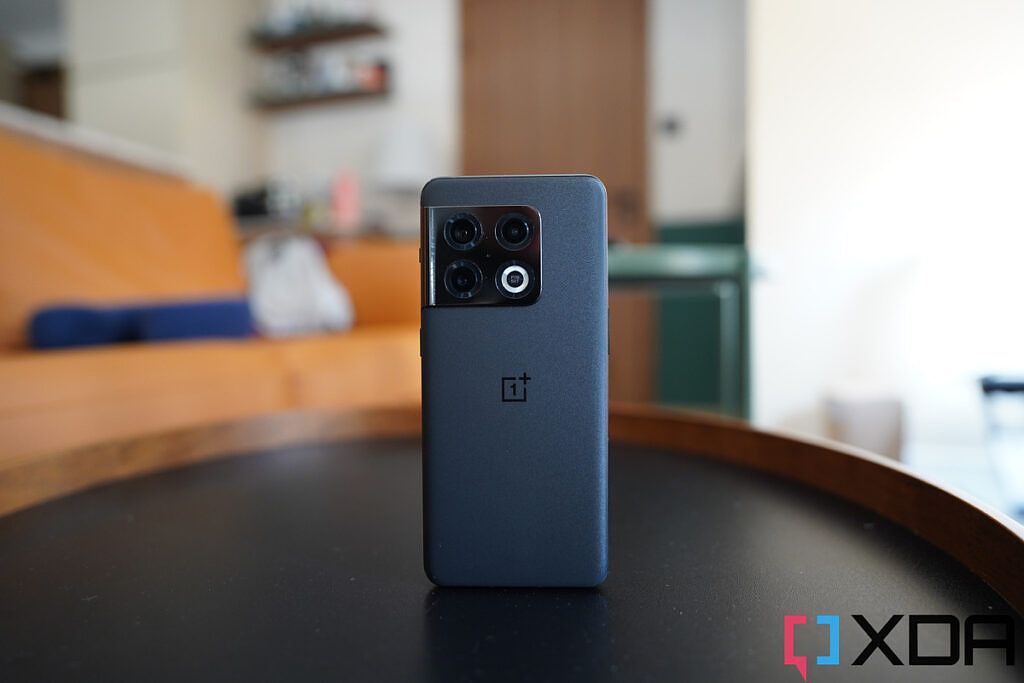
Look, we know OnePlus’ OxygenOS has lost a bit of its identity over the past year — ever since OnePlus and OPPO finally admitted to being the same company, and OxygenOS began looking more and more like OPPO’s ColorOS. But here’s the thing — ColorOS is good, and this “colorfied” version of OxygenOS running in the OnePlus 10 Pro is still one of the zippiest and smoothest software around.
Every Android flagship offers a 120Hz refresh rate these days, but OxygenOS’ (and ColorOS’) animations just zip around noticeably faster and smoother than, say, Samsung’s OneUI, which sees dropped frames from time to time. Google’s Pixel UI has pretty smooth animations, and a case can be made for that software taking this spot, but OxygenOS is just a bit more customizable, with a better Always-On Display and more useful shortcut gestures.
The OnePlus 10 Pro itself is a fine phone too, running on the Snapdragon 8 Gen 1 chip, with a visually striking design that sees the camera module spill over the sides and blend into the chassis, and a very good “Hasselblad” camera system headlined by a 48MP, f/1.8, 1/1.43″ main camera plus a 50MP ultra-wide shooter and an 8MP 3.3x telephoto zoom lens. Photos captured by the OnePlus 10 Pro are vibrant with punchy colors and excellent dynamic range. If we must nitpick, it’s in the ultra-wide sensor, the image sensor is smaller than last year’s OnePlus 9 Pro, so you get ultra-wide shots that are actually softer on details.
OnePlus’ camera app is still arguably the best in Android — one of the few Android camera apps that can actually switch between lenses without the herky-jerky animations that you’d see when doing the same action in a Samsung or Sony phone. The OnePlus 10 Pro is still a very, very fast phone all around, from the camera app all the way to charging speeds.
The OnePlus 10 Pro ships with an 80W fast charging brick (65W in the US) that can top up the phone from 0-100% in around 27 minutes, and the phone also supports wireless charging up to 50W, which can pump the phone from empty to full battery in 43 minutes. You will need the official OnePlus wireless charger to get those speeds, however.
Overall the OnePlus 10 Pro is a good-looking, polished Android phone that should satisfy your need for speed.
- OnePlus is a brand that's always been about speed, and the OnePlus 10 Pro definitely delivers if you're looking for animations that appear buttery smooth and seem to zip around as fast as you swipe your fingers. The thing is, the other bits of the phone, from screen to cameras to processors, are all top-notch too.
Best point-and-shoot camera phone: Google Pixel 7 Pro
![]()
The first three Google Pixel phones were hands-down the best still camera phones around, mostly because Google’s computational photography was so far ahead of the game at the time. In the years since, other phone brands have stepped up their computational photography game. Add in the fact that Google didn’t bother upgrading its camera hardware for the Pixel 4 and 5, that meant the Pixel was no longer the undisputed best camera phone around by 2019 or so.
Google regained the crown last year with the Pixel 6 Pro (at least in this category of best point-and-shoot) because it finally upgraded camera hardware to keep up with the competition. This year’s Pixel 7 Pro brings further refinement to that Pixel 6 Pro system.
The main camera of the Pixel 7 Pro is identical to the 6 Pro in terms of hardware — a 50MP Samsung GN1 sensor with a 1/1.31-inch image sensor and fast aperture. But the Pixel 7 Pro’s new silicon the Tensor G2 improves performance, particularly in low light scene where the Pixel 7 Pro no longer takes a long time to snap a night shot.
The 12MP ultra-wide has been improved too, it has a wider FoV, and doubles as a macro lens that works very well. Then there’s the 48MP Periscope zoom lens — this too got upgrade to a optical zoom range, but Google is using some neat tricks to produce an almost lossless 10x zoom too. Essentially, the Periscope camera will shoot in pixel-binned mode in 5x mode, but in 10x mode will use the full 48MP resolution and crop into the sensor, that way you get a “true” 10x zoom.
While the Pixel 7 Pro still lacks the awesome video capabilities of an iPhone 14 Pro, or the huge sensor magic of the Xiaomi 12S Ultra, it’s arguably the best phone for people who just want to point their phone, tap shutter button, and then get a shot they can post to social media immediately without tweaks or edits. The reason for this is software. Google’s software smarts — aka computational photography — make taking photos a joy, in that you don’t really stress too much, just point and shoot and you’re going to get a shot that’s almost always perfectly balanced, with just the right amount of boosted colors and contrast (without going overboard like Samsung), accurate white balance, and enough sharpness. Even if you didn’t frame properly and accidentally captured some unwanted people, Google’s “Magic Eraser” trick can help you fix that in post with a couple of taps. Real-time dials to adjust the lighting in both subject and background are also huge bonuses. There’s no minor shutter lag like you’d get in a Galaxy S22 Ultra, or that slightly artificial over-processed look from a Huawei and, surprisingly, the iPhone 14 Pro. This is a camera that just works.
But there’s more to a phone than just the camera, so you can rest assured that the Pixel 7 Pro offers top-tier performance in all the other bits too. The 6.7-inch, 120Hz display looks great, and because it’s an LTPO panel, it has a variable refresh rate to conserve battery. All of us at XDA are also fans of the unique design of the device, particularly that striking visor and the bold colors.
Last year’s Pixel 6 Pro was the first Pixel phone to bring truly great hardware, and the Pixel 7 Pro brings subtle refinements all around.
- The Google Pixel 7 Pro is the best point and shoot camera for most people because it almost always gets the shot right.
Best Smartphone Cameras of 2021: Apple, Samsung, Xiaomi, OnePlus — We’ve tested them all!
Best overall camera phone: Vivo X80 Pro

I know we just waxed poetically about the Google Pixel 6’s camera prowess, but the best overall camera goes to the Vivo X80 Pro in my opinion because it has a more well-rounded system.
The X80 Pro’s 50MP main camera is only a hair behind the Pixel 6 Pro’s in terms of consistency and shutter speed, but the X80 Pro’s 48MP ultra-wide camera produces superior ultra-wide shots than the same lens in the Pixel 6 (or iPhone 13 Pro or Galaxy S22 Ultra, for that matter). Then there are the two zoom lenses: the Vivo X80 Pro has a 12MP 2x optical zoom lens along with an 8MP 5x Periscope zoom lens. While we think the Galaxy S21 Ultra’s 3x and 10x are better dual-focal length setups, Vivo’s 2x and 5x still beats the Pixel 6 Pro’s sole 4x zoom lens in terms of focal length versatility, and there’s a new cinematic mode that produces somewhat convincing artificial bokeh in video.
But the best part about the Vivo X80 Pro’s cameras is perhaps Vivo’s self-developed ISP inside the V1+ chip, which allows the X80 Pro to produce uncanny HDR photos that almost never blow out any light source. Trust me — I have pitted the X80 Pro against several top smartphones and if we are just going by still photos, the X80 Pro beats everyone.
Elsewhere, the Vivo X80 also packs a Snapdragon 8 Gen 1, with 12GB of RAM, and a vibrant, 120Hz 6.8-inch OLED screen. This panel doesn’t get as bright as the absolute best screens on the market, but it’s still very, very good and likely better than 99% of screens you have at your home or office.
If there is a complaint to be had, it’d be software. FunTouchOS is far from perfect, as it has jankier animations compared to, say, OxygenOS, and its multi-tasking system is oddly limited, in that some apps like Chrome can’t open in a resizable floating window (even though Chrome can open this way in Oppo or Samsung’s UI). There’s also some third party bloatware in the European and Asia units of the phone but they can be deleted.
The only downside to the Vivo X80 Pro is that the phone is not on sale officially in the US, which means many readers can’t buy this officially. Still, we cover smartphones on a global scale — we can’t just pretend a phone doesn’t exist just because it doesn’t sell in North America — and the Vivo X80 Pro has arguably the best overall camera system that deserves a spot here.
- The Vivo X80 Pro is a very polished all around smartphone with a camera that can produce better HDR photos than arguably everyone else on the market.
Best Android phone for gaming: ASUS ROG Phone 6 Pro
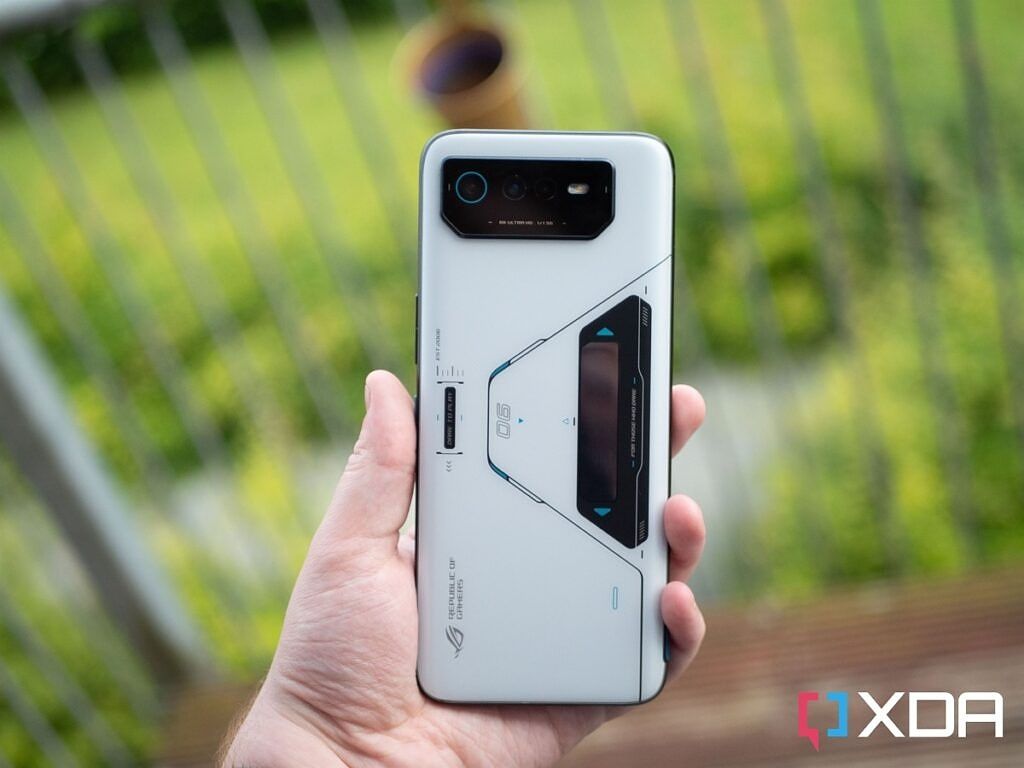
2021’s ASUS ROG Phone 5 Ultimate was our pick for gaming phone of the year, and its 2022 update is even better — thus making it an easy favorite for the best gaming phone of the year so far.
So what makes the ROG Phone 6 Pro a gaming beast? Let’s start with the 165Hz display, which can run at the highest refresh rate full time without micro-stutters. Do note the panel isn’t an LTPO panel, however, but it’s not a big deal for a game-centric phone. The screen is also entirely uninterrupted because the selfie camera is situated in the thin bezel above. The display also has a touch sampling rate of 720Hz, which means it scans for input every 1.4ms, and Asus says that thanks to the increased touch sampling rate, the Asus ROG Phone 6 Pro has a touch latency of 23ms.
Throw in a massive 6,000 mAh battery to handle that variable refresh rate, which means you won’t have to worry about finding a charger mid-day. In our testing, this phone can last a day and a half easily if used as a “normal smartphone,” and even if you do game on it, unless you’re pulling marathon sessions, it can last you through a day on one charge.
Because this is a gaming phone, the ROG Phone 6 Pro offers functional shoulder buttons named “AirTriggers” that give extra control to first-person shooters in ways most normal smartphones cannot. There’s also a rear display, named “ROG Vision,” which allows you to display graphics on it for some flair.
From our testing, the ROG Phone 6 is a beast of a performer, able to run games at 60fps with few drops. All the benchmarks are chart-topping too.
On the camera front, you have the main system consisting of a 50MP IMX766 main sensor, 13MP ultrawide (f/2.4) and 2MP macro setup, and a 12MP selfie camera. Photos captured by this phone are sharp, punchy, and overall good, but video recording isn’t the greatest, as footage suffered from poor stabilization and dealing with sudden shifts in lighting.
Ultimately, if you are a mobile gamer and you don’t want to be bogged down by less-than-premium hardware, this is the phone to get.
- ASUS ROG Phone 6 Ultimate is, as the name implies, the ultimate gaming phone with up to 18GB of RAM.
Best large foldable phone: Samsung Galaxy Z Fold 4

The Galaxy Z Fold 4 seems at first like a very minor and iterative update over the already excellent Galaxy Z Fold 3, but Samsung made several small, but crucial, improvements.
First, Samsung shaved a few millimeters off the hinge’s bulkiness, so it does not protrude from the side of the phone as much as before. Samsung then gave that extra bit of space to the outer display, so the screen is ever so slightly wider. This is a good thing as the Fold series’ outside screen has always been a bit elongated and cramped.
Then, Samsung improved the camera hardware. The Fold 3’s trio of 12MP shooters were decent at best, but this year, the Fold 4 gains a 50MP image sensor with a larger 1/1.53-inch image sensor size. The 10MP zoom lens has also been improved to a 3X telephoto lens. The ultra-wide remains the same, however, at 12MP, but Samsung’s superior computational photography has improved performance a bit.
Samsung also fine-tuned the software to further take advantage of the larger display. One of our favorite new features is the taskbar, which is a bar that runs along the bottom of the phone listing your most used or last used apps. From this bar, you can quickly cycle through apps without ever jumping back out to the homescreen. You can, of course, get rid of this bar if you don’t need it or don’t want the distraction.
Samsung also further worked with third-party app developers to take advantage of the Fold 4’s larger display. For example, Spotify and Google Meet will open with a layout specifically designed for the Fold’s larger screen.
With a 4,400 mAh battery, the Galaxy Z Fold 4 has enough juice to power the device through a whole day, and for those of us at XDA who owns one, the device has had no trouble making it through an entire day on a single charge. If you want to top up, the phone can be charged wired or wirelessly. There’s also reverse wireless charging to charge, say, the Galaxy Buds.
If you want a phone that can be both a tablet and a smartphone, the Galaxy Z Fold 3 is hard to beat right now. If you find it a bit too big, however, then Samsung has a smaller option for you too — see below.
- The Samsung Galaxy Z Fold 4 is the most polished foldable smartphone ever
Best small foldable phone: Samsung Galaxy Z Flip 4

If you have ever lamented the escalating size of smartphones and want something that won’t create a bulge in your pocket, then the Galaxy Z Flip 4 is worth considering. Unlike the Galaxy Z Fold 4, which is a tablet that folds into a phone, the Flip 4 is a normal-sized smartphone that folds into a compact square, about the dimensions of a coaster, or a makeup compactor (dimensions: 84.9 x 71.9 x 17.1 mm). Samsung didn’t change much in terms of overall hardware and design from the outside, but last year’s Flip 3 was universally acclaimed for its beautiful and functional design. This means you still have a 6.7-inch 120Hz main screen and a 1.9-inch outside cover screen.
Samsung improved the usability of the outside screen by allowing it to display any app you choose now. While some apps will look absolutely ridiculous on the tiny display, for the most part, it’s good news that you’re not limited to just seeing widgets on the outside screen. This means you can use the Flip a bit more when it’s closed.
Inside you’ll find a Snapdragon 8 Plus Gen 1 with 8GB of RAM and a larger 3,700 mAh battery. That battery size sounds small, but the Snapdragon 8 Plus Gen 1 is a highly efficient chip. We can’t guarantee the Flip 4 will be an all-day phone for you, but at least battery life won’t be terrible like in previous Flips. The hinge is sturdier than ever, and the Galaxy Z Flip 4, like the Galaxy Z Flip 3, also features IPX8 water resistance.
The hinge’s ability to stay halfway folded in place — which Samsung calls “Flex Mode” adds a whole slew of new use cases to the Galaxy Z Flip 4. For example, you can fold it in an L-shape, place it on a tabletop, and have a hands-free video calling or watching machine. Likewise, you can shoot time-lapses or long-exposure shots without needing a tripod or hold the phone up yourself.

And with a starting price of $999, the Galaxy Z Flip 4 is still the most affordable foldable phone that’s sold worldwide. The Galaxy Z Flip 3 was a huge hit and became semi-mainstream in wealthier, high-spending countries like the US, South Korea, and Singapore. The Galaxy Z Flip 4 should continue that trend.
- The Samsung Galaxy Z Flip 4 is the most affordable and stylish foldables on the market right now.
Best Foldable Phones: The Top Folding Smartphones that you can buy right now
Best stock Android phone: Google Pixel 7

Okay, so the Google Pixel 7 technically isn’t “stock” Android, because stock Android is the bare bones open-source Android (AOSP) usually seen in a few entry-level budget phones from obscure brands. Instead, the Pixel 7 runs a Google-modified version of Android 13, but because this is Android the way Google sees it, in our opinion, this makes this Pixel-ified experience is a far more important signifier of “how Android should be” than plain old stock Android.
And if you want that true Google Android experience, the Pixel 7 series are the phones to get. We listed the standard Pixel 7 here because we still think it’s the best Pixel phone for most people. The Pixel experience with the 7 series isn’t going to feel radically different for those who have already used the Pixel 6 series — Android 13 with Material You is a refinement year than a major overhaul year.
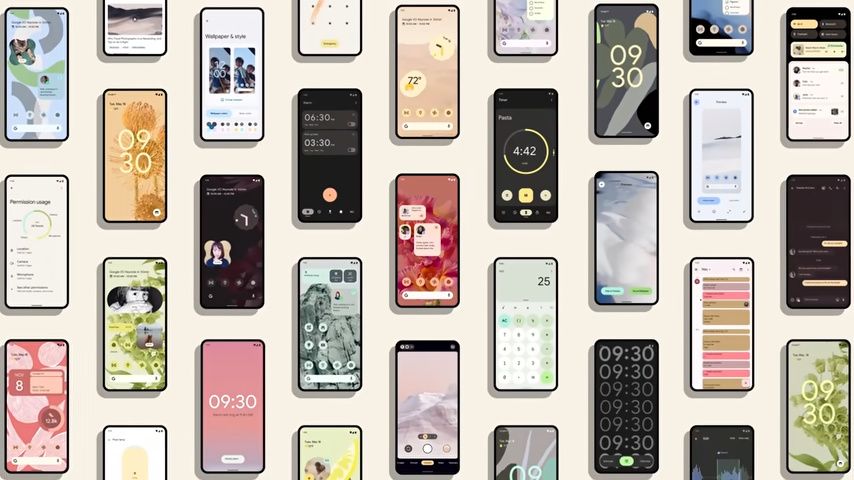
The so-called “Material You” is Google’s way of making the Pixel Android experience feel more personal — with your homescreen wallpaper and create a palette to color the system interface. Throughout the UI, there are whimsical Google touches, such as buttons of varying sizes and shapes.
Other than the excellent software, you’re getting an excellent phone too with the Pixel 7. The 6.4-inch, 1080 x 2400 OLED screen refreshes at 90Hz and looks great most of the time. The camera system here is among the very best point-and-shoot cameras around. On the Pixel 7, the 50MP sensor is backed by Google’s epic photo-processing algorithms that will find proper balance and dynamic range in every situation.
The Pixel 7 may not be the absolute most powerful phone around — the Tensor G2 scores lower than the Qualcomm Snapdragon 8 Plus Gen 1 in many benchmarks — but the software is smart and understands context better than any other phone. Add in a unique two-tone finish, and a really attractive price, and it’s hard to name anything else in this spot if you want the best phone running Google’s vision of Android. Of course, the Pixel 7 Pro and Pixel 6a will fit that need the same.
- The Pixel 7 packs the second-gen Tensor SoC, a brighter display, and improved cameras.
Best Android phone not sold in the US: Oppo Find X5 Pro

The Oppo Find X5 Pro is a highly polished premium flagship that can go toe to toe with the Samsung Galaxy S22 Ultra in almost every area except two: its zoom lens isn’t nearly as good, and it lacks a stylus. Otherwise, in all other areas, the OPPO Find X5 Pro either at least matches the Galaxy S22 Ultra or beats it. Let’s start with the display, the Find X5 Pro’s 6.7-inch, WQHD+ OLED panel is every bit as good as the Galaxy S22 Ultra’s screens: it uses the same LTPO 2.0 technology, it gets virtually as bright to the human eye, and color reproduction and viewing angles are all a virtual tie. Then there’s the processor, the Find X5 Pro packs the same Snapdragon 8 Gen 1 chip that’s powering the Galaxy S22 Ultra’s US/China/India versions; and the Find X5 Pro’s 50MP main camera can trade blows with the S22 Ultra’s main cameras in any condition.
As for areas in which the Find X5 Pro wins, there are objective wins like the Find X5 Pro having a noticeably superior ultra-wide camera. This is due to the fact that Oppo used the exact same Sony IMX sensor for both the wide and ultra-wide camera, and while there’s still a big of quality dropoff between the wide and ultra-wide lens, it is much smaller than in other phones. The Find X5 Pro also has a ceramic unibody design that many of us find very premium and comfortable to hold.
If you know that you don’t care about the stylus or being able to grab clean 10x zoom photos, and you either live somewhere in which this phone sells officially, the Find X5 Pro is an excellent alternative to the Galaxy S22 Ultra.
- The Find X5 Pro can go toe-to-toe with the Galaxy S22 Ultra in almost every area, so if this phone is available in your region, it's a great alternative to Samsung's flagship.
Best for multitasking: Microsoft Surface Duo 2

If productivity is paramount, then two screens are obviously better than one, and right now the only dual-screen phone on the market that isn’t running on outdated hardware is the Microsoft Surface Duo 2. Bringing back the premise of the original, the Surface Duo 2 is essentially two screens attached by a very well-built 360-degree hinge. While the first model had a very mediocre single-camera setup, an outdated SoC (even at the time of shipping), and a small battery, the Surface Duo 2 improves on all three of these areas.
First, there’s a proper camera now, consisting of a 12MP, f/1.7 main, 16MP ultrawide, and a 12MP 2x telephoto zoom lens. Unfortunately, this also means the machine has a camera protrusion now, so the two screens cannot flip backward and stay flat as before.

Next, Microsoft put the Snapdragon 888 into the Surface Duo 2, which is still today the best SoC in Android. The original Duo shipped with Snapdragon 855 at a time when the 865 was already out. The battery capacity has also been increased to 4,449 mAh, which despite the two screens, can power the machine for a full 12-, 13-hour day on a single charge. The bezels around the screen have also shrunk a bit — though they’re still sizable — and the screen refresh rate has been bumped up to 90Hz. So in terms of hardware, the Surface Duo 2 is an improvement in every way.
When the Surface Duo 2 works as intended, this thing is a multitasker’s dream: run two apps at the same time on separate screens, or stretch one app across two screens to see more content. Or fold the phone halfway and watch videos or take video calls hands-free. Another usage I enjoy is holding the phone “sideways,” and using the bottom screen to display a keyboard while the top screen is showing Google Docs or WhatsApp. It reminds me of old-school clam-shell PDAs. The possibilities aren’t quite endless — but there are many of them.
However, the Surface Duo 2 still suffers from some of the software bugs that plagued the first Duo, including slow reactions to switching orientations or one screen freezing a bit while the other screen remains active. The bugs don’t happen as frequently as on the original Duo, but it’s still noticeable at least once or twice a day if it is your main phone. There’s no sugar-coating this: the Microsoft Surface Duo 2 is a bit rough around the edges. But still, if multitasking on a mobile device is your number one goal, it’s hard to top what this phone can do.
- The Microsoft Surface Duo 2 brings much improved hardware and slightly improved software over the first generation. The result is a dual-screen phone that can more than most phones.
If we must pick the best overall phone here, it’d be the Galaxy S22 Ultra. But the Google Pixel 7 being several hundred dollars cheaper makes it very, very appealing. For those who don’t mind importing, the OPPO Find X5 Pro rivals the Galaxy S22 Ultra in many areas (and wins in some). But ultimately, if you have money to spend though, the Galaxy Z Fold 4 is still the ultimate do-it-all device.
The post These are the best Android phones to buy in 2022: Samsung, Google, OnePlus, and more! appeared first on XDA.
from XDA https://ift.tt/MLVp7eU
via IFTTT



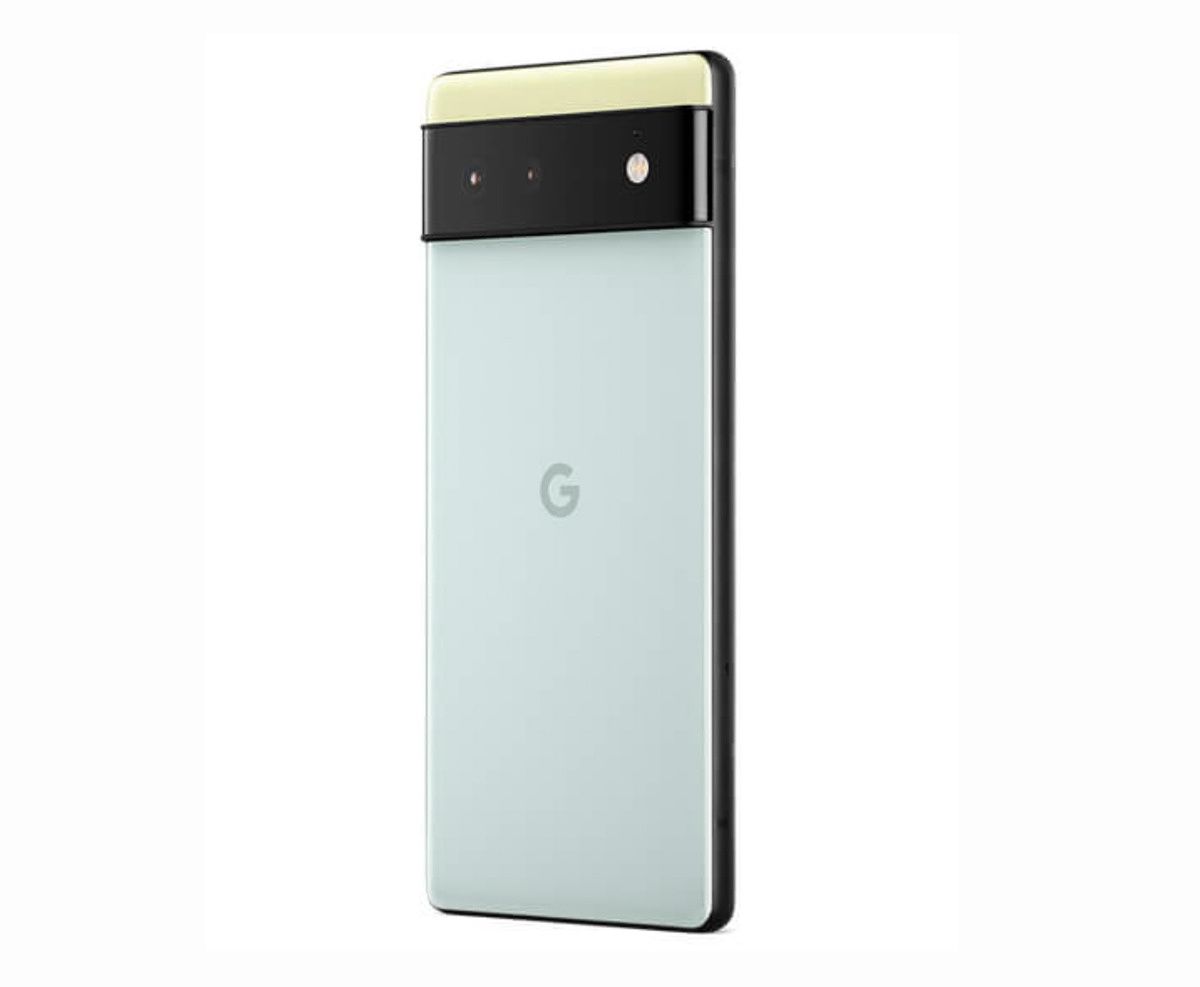
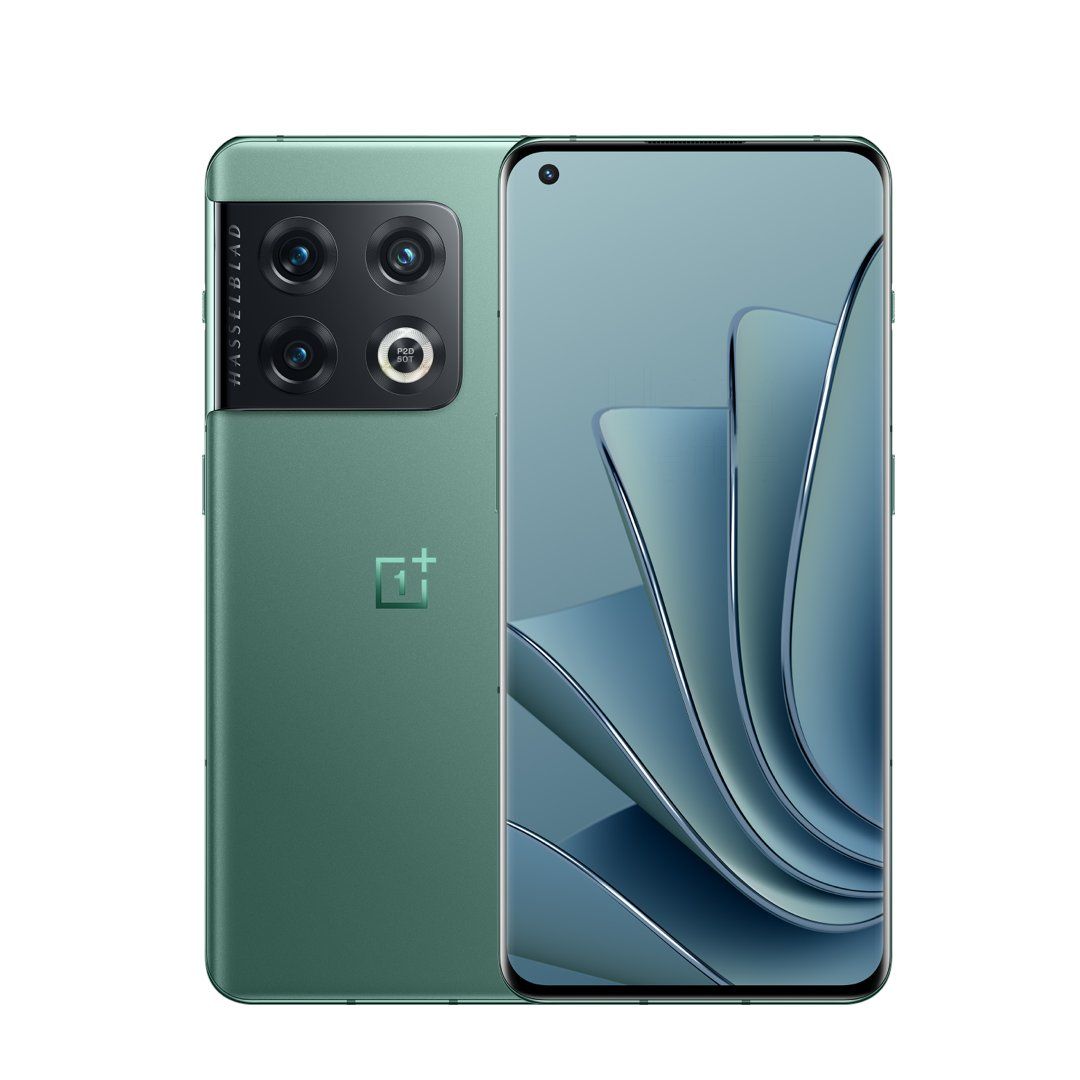



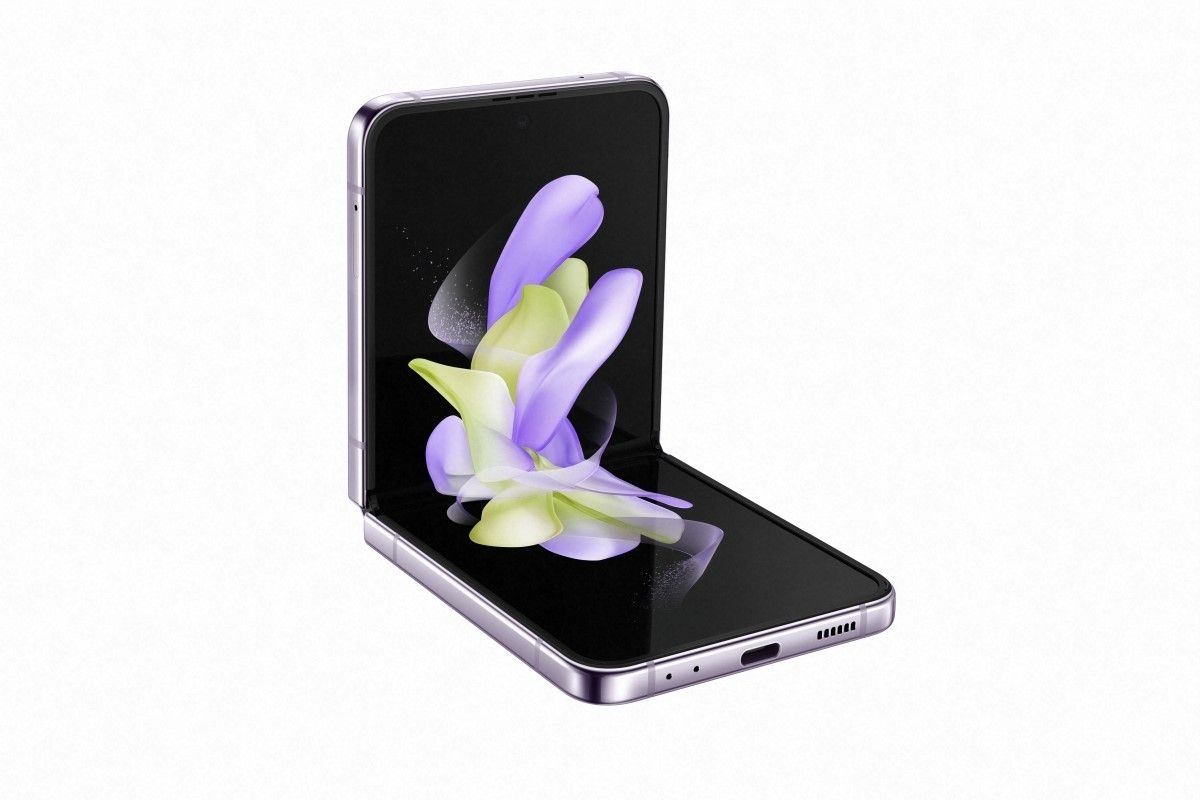

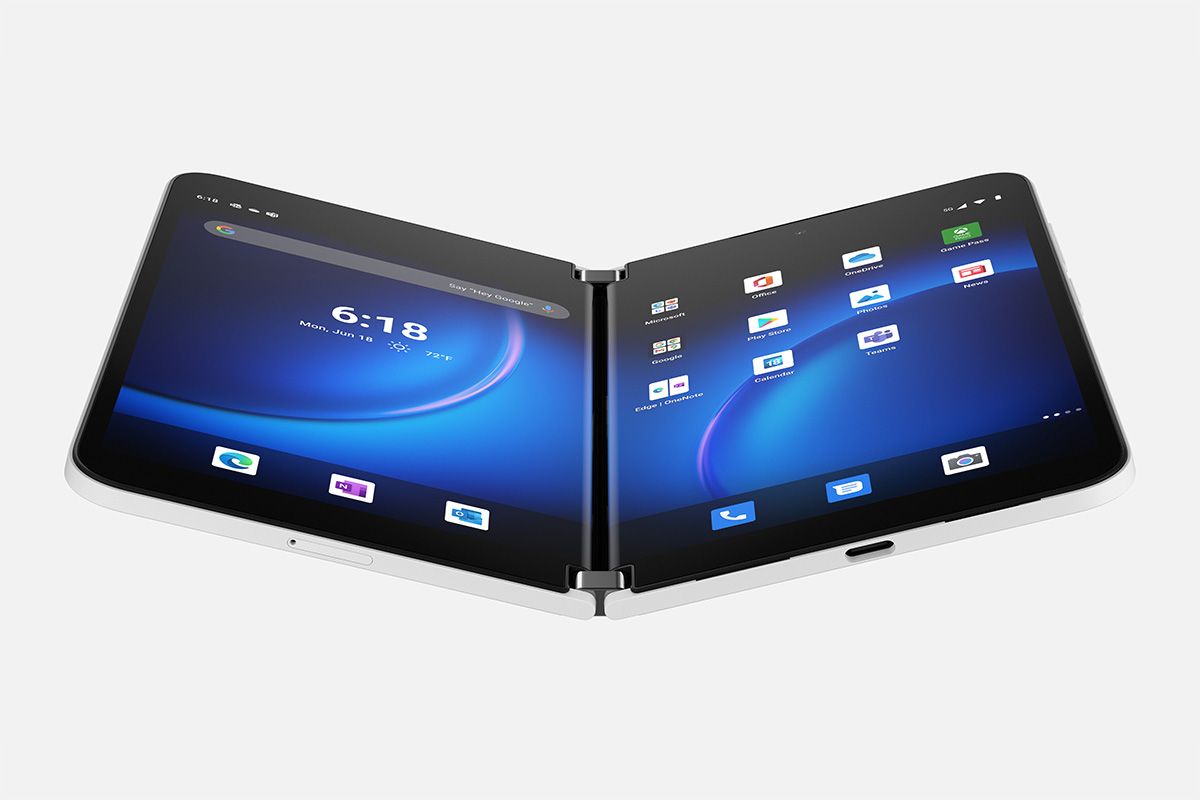
Aucun commentaire:
Enregistrer un commentaire